I saw this question asked in a Facebook group recently and thought given my interest in exploring bushwalks in the Blue Mountains, and bird photography that it was a topic I could put together some great suggestions for! While a lot of the places I go to photograph birds aren’t bushwalks, the birdlife is something I pay a lot of attention to when I’m out on a track – for obvious reasons.
If you are looking for some great photography locations you can check out my posts on where to find the tiny birds of the Blue Mountains and the best spots for photography in the Blue Mountains, but if you are just looking for a great bushwalk where you’ll likely see a lot of our amazing native Blue Mountains birds then read on!
West Glenbrook Reserve
Suburb: Glenbrook
Difficulty: Easy – this one is pretty flat with a gentle incline if you do it as a loop.
Where to find it: At the end of Station Street in Glenbrook. You’ll see a sign saying Station Street Firetrail. The reserve is at the end of a residential street so there is only street parking available.
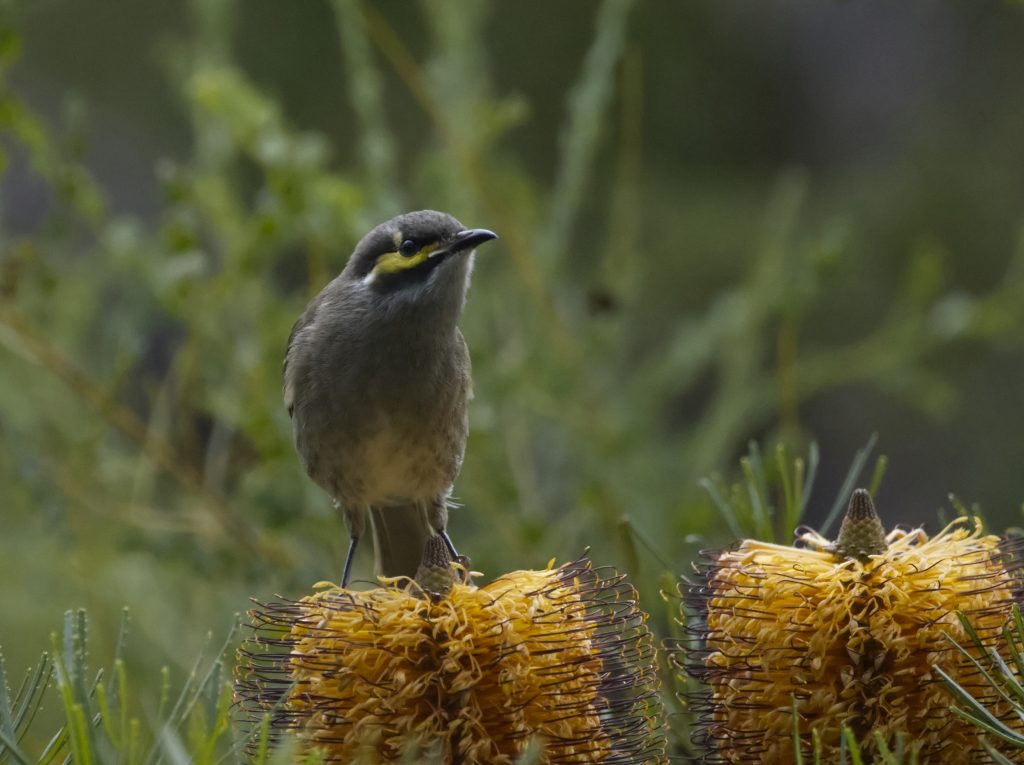
A great option if you are looking to bring your 4-legged friend along for some birdwatching as this is one of the dog friendly Blue Mountains bushwalks. The Eastern Yellow Robins love to show off, and you may even be lucky enough to spot the Rose Robin in the trees along the houses that border the clearing. Keep your eyes peeled for Red Wattlebirds, Brown Thornbills, Bronzewing Pigeons and Yellow-faced Honeyeaters.
Winnicoopa Fire Trail
Suburb: Blaxland
Difficulty: Pretty easy if you stay on the main trail. There’s no big inclines but a couple of rougher points of the track to navigate due to erosion but in general this is a pretty flat, sandy track.
Where to find it: At the end of Winnicoopa Road in Blaxland. Like West Glenbrook Reserve this one is the end of a residential street so there is only street parking available.
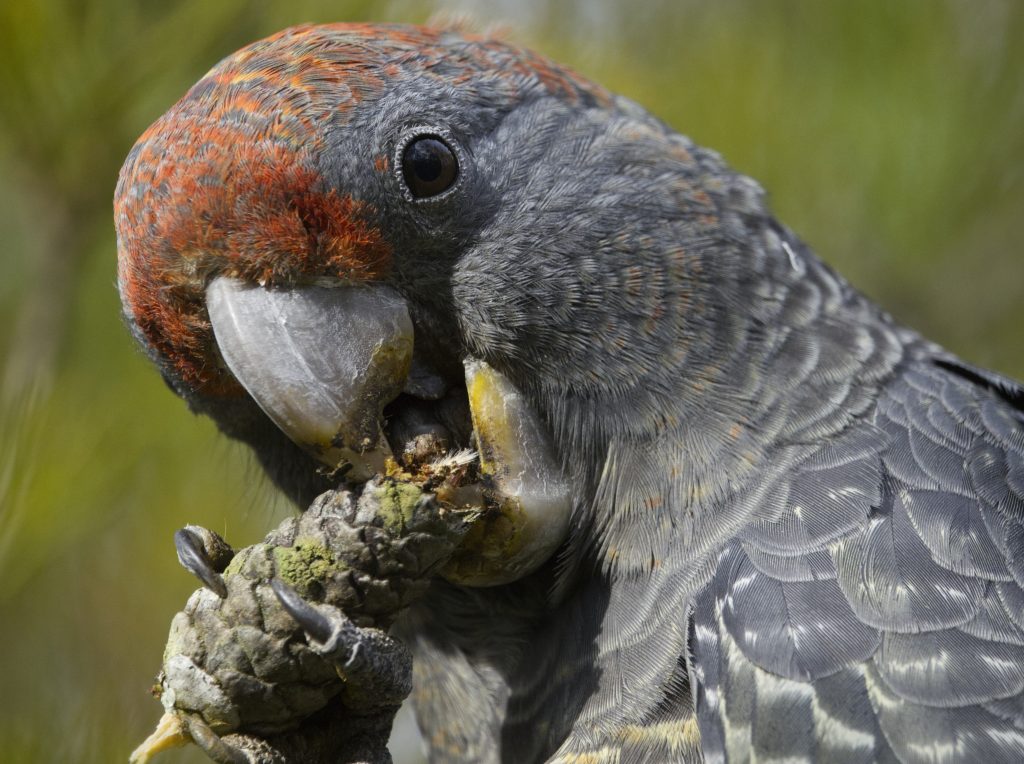
Another walk popular with the local dog owners, Winnicoopa Fire Trail also offers the chance for some great birding! For a couple of months earlier in 2023 this track was the feeding location of a family group of 8 Gang Gang Cockatoos, which had me visiting regularly, but its also a great spot for Rufous Whistlers, Grey Shrikethrush, Eastern Yellow Robins, Eastern Spinebills, Silvereyes, Yellow-faced Honeyeaters and I even spotted a Scarlet Myzomela on one of the side tracks!
This shot of a juvenile male Gang Gang has been featured in a threatened species exhibition in Canberra and enquiries are welcome for prints.
Blue Gum Swamp
Suburb: Winmalee
Difficulty: This depends on which route you take. It can be done as a loop, which will include some inclines on one side. It is an easier walk if you swing left at the first intersection and do it as an out and back walk which has gentler inclines. It is flat at the bottom if you head out to The Grotto or carry on towards the Blue Gum Swamp.
Where to find it: The walk starts at the end of Whitecross Road in Winmalee where there is some parking available.
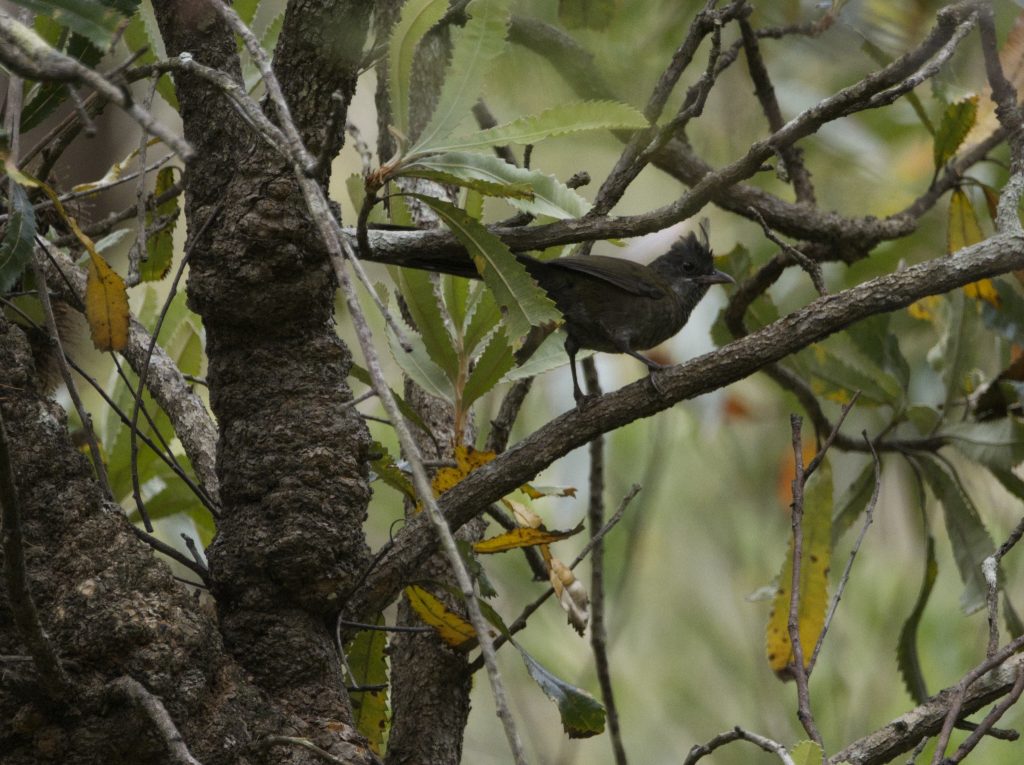
Another of my favourite locations for birds, there is a high likelihood of picking up a tick or two on this track this season. I’ve seen a number of locals report numerous ticks on the track out to The Grotto.
This is another of the tracks where you’ll see Variegated Fairy-wrens, as well as the Superbs, and is great for a variety of honeyeaters, parrots, treecreepers, robins, Eastern Spinebills and if you’re lucky you’ll spot an Eastern Whipbird, Black-Faced Monarch or Rufous Fantail in the trees. There are a few Lyrebirds about on this track also so you may come across one scratching on the ground. The walk through the grand old Blue Gums is lovely and this track is also great for spotting gliders at night. The local Square-tailed Kite has also been seen hunting over this area of bushland.
Woodford Dam
Suburb: Woodford
Difficulty: If you do the full loop this is over 6km, and a climb back up from the dam at the bottom. You could just do the flatter part at the top for an out and back walk.
Where to find it: At the end of Winbourne Road in Hazelbrook.
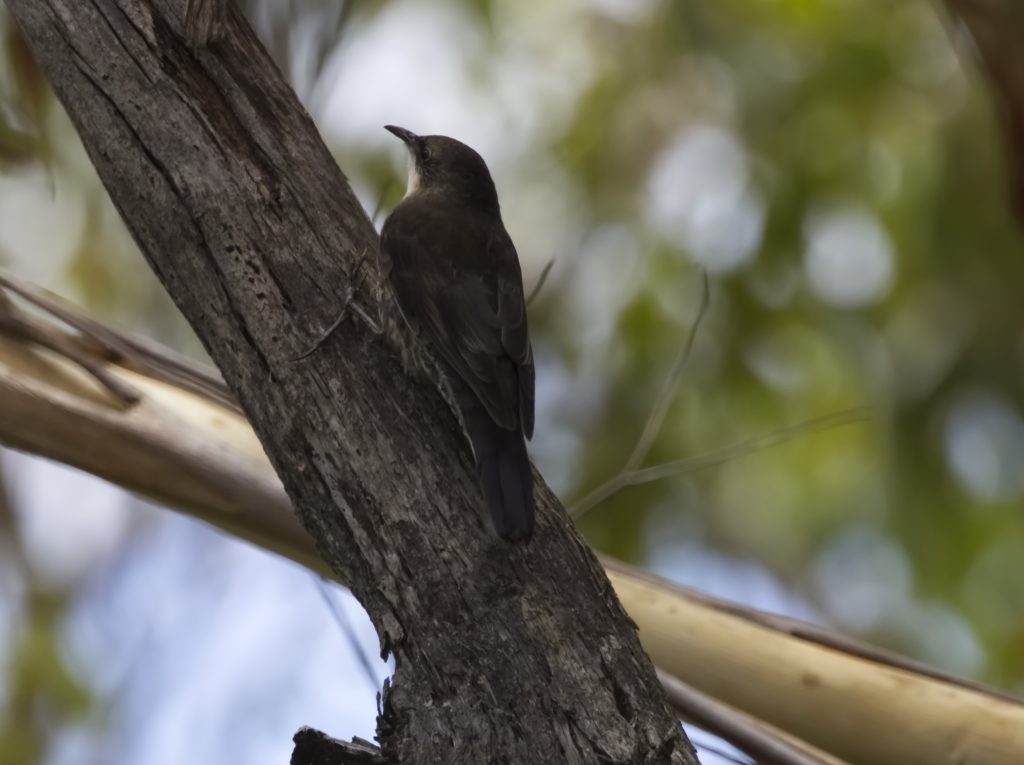
I went exploring this walk due to whispers of Gang Gang sightings in the location. I was disappointed in that respect, but there were still plenty of birds about to see, including a number of Yellow-tailed Black Cockatoos that flew over Lake Woodford. Expect to see the Eastern Yellow Robins about, as well as Thornbills, Treecreepers, Yellow-faced Honeyeaters, Red-browed Finches and Scarlet Myzomelas.
Little Switzerland trail to Rocket Point
Suburb: Wentworth Falls
Difficulty: If you just do the Little Switzerland walk this is a nice flat fire trail, if you continue down to Rocket Point for the views of Wentworth Falls (one of the best waterfalls in the Blue Mountains) then you’ll have a few inclines to tackle but nothing too dramatic.
Where to find it: I usually start at the Lincolns Rock carpark because I’m often shooting the birds at that end but you can also start from the end of Chester Road.
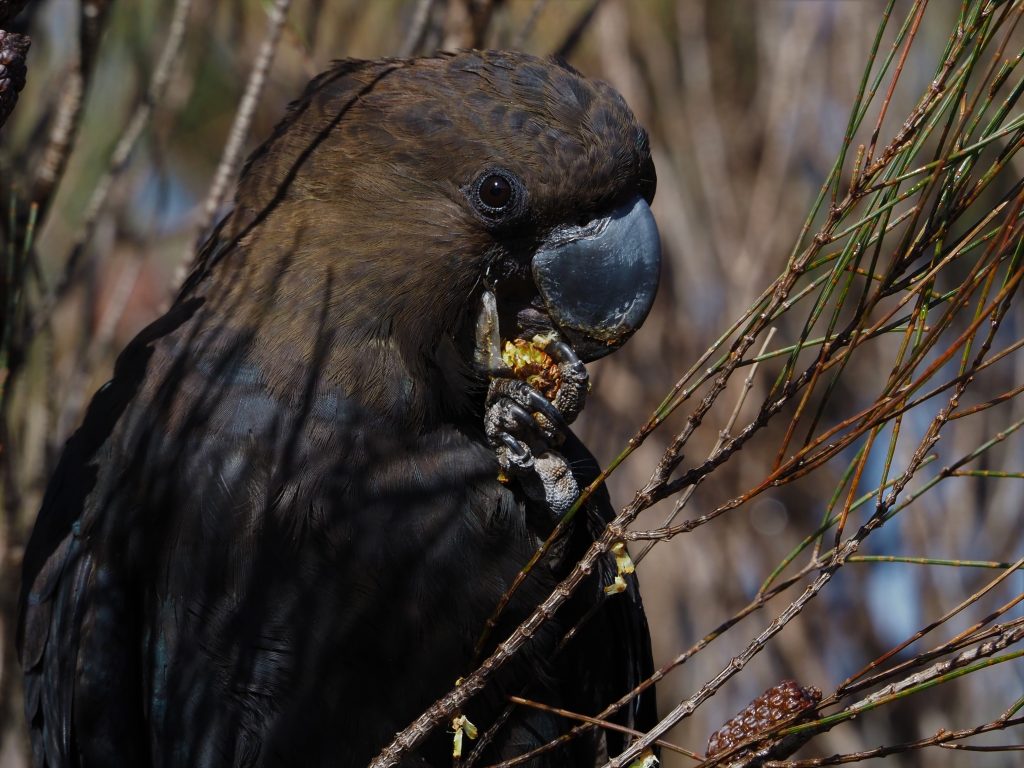
This is one of my go-to locations for bird photography. The start of the trail is particularly well populated with Casuarina trees, which happens to be the only food source of the endangered Glossy Black Cockatoo. Listen carefully for the cracking of the seed pods and you might be lucky enough to catch a glimpse. This area also has frequent sightings of the Yellow-tail Black Cockatoos, a flock of which reside nearby, as well as a great variety of other birds including Wattlebirds, Honeyeaters, Thornbills, Silvereyes, Variegated Fairy-wrens, Kookaburras and Magpies. Watching the trees on the way to Rocket Point you may see a White-throated Treecreeper or two winding its way around the trunks. Gang Gang Cockatoos, also endangered, have also been seen from time to time in this area.
Minni Ha Ha Reserve
Suburb: Katoomba
Difficulty: An easy walk until you reach the top of the climb down to Minni Ha Ha Falls, another of the best waterfalls in the Blue Mountains. The climb down is quite steep and you need to watch your footing.
Where to find it: The reserve is at the end of Minni Ha Ha Road.
Another location where Gang Gang Cockatoos have spent time feeding, the reserve also offers the chance for seeing Robins, Fairy-wrens, Thornbills, Golden Whistlers, Firetails, Shrikethrush and Honeyeaters. I’ve also spotted a Sacred Kingfisher there before.
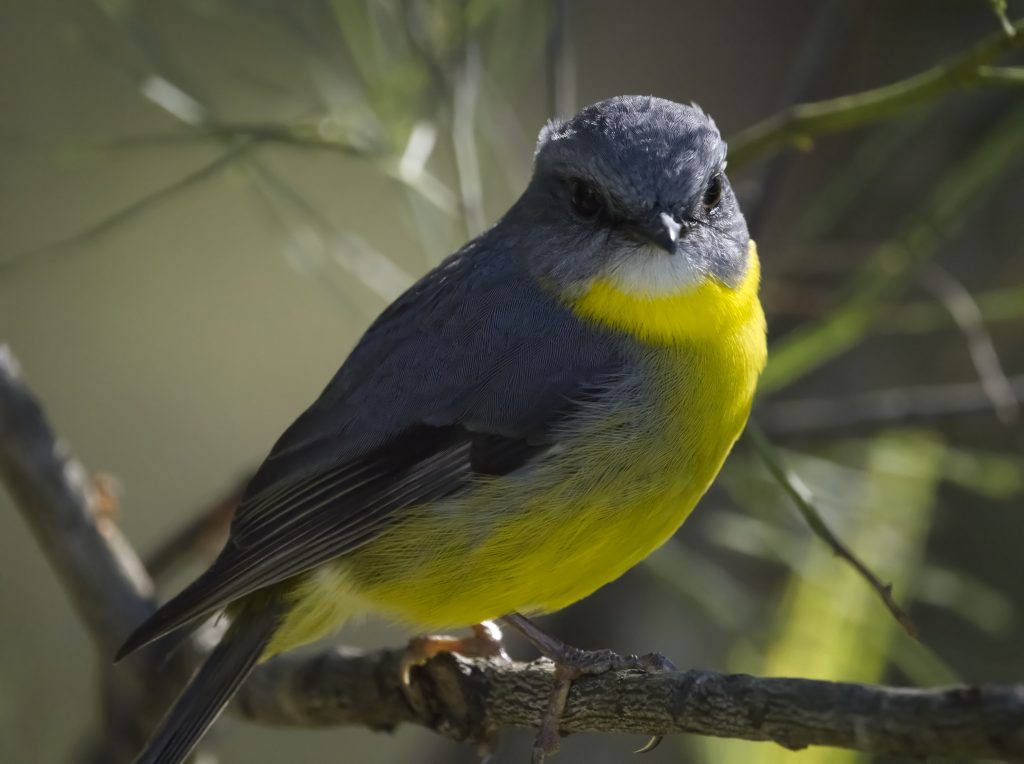
Centennial Glen
Suburb: Blackheath
Difficulty: This can be done as a full loop or just do part of the trail. There are some slippery parts if there has been recent rain and some inclines and scrambles depending upon which way you go in. It can also be confusing which way to go in some parts.
Where to find it: There’s a number of different points from which to access Centennial Glen, I prefer to go in from Bundarra Street.
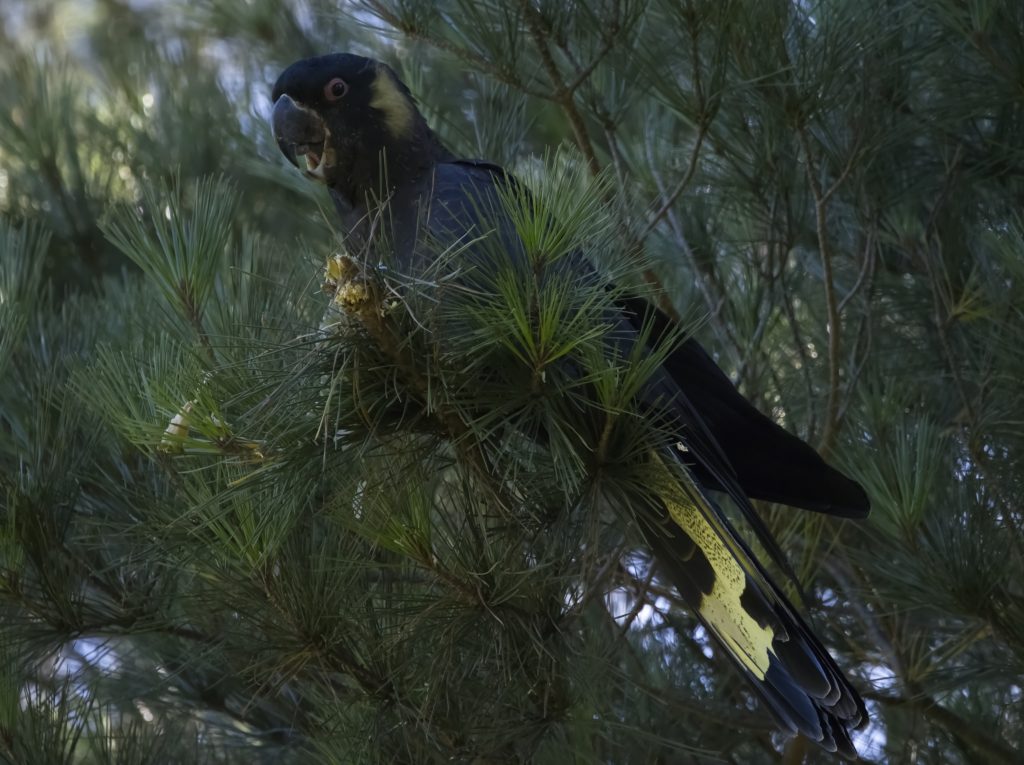
This is a great walk for having a really good chance of spotting Yellow-tailed Black Cockatoos, as the start of the path from Bundarra Street is lined by Pine trees on both sides which happens to be their favourite food!
This walk features a lovely little canyon as a detour from the main track and its a popular spot for rockclimbing so you may see a number of people set up on the path that follows the rock walls. It’s a great trail for seeing Bowerbirds, Silvereyes, Honeyeaters, Robins and Fairy-wrens.
6 foot track
Suburb: Megalong Valley
Difficulty: Easy walk out to Guyver Bridge and plenty of opportunity for birds along the way!
Where to find it: Start at the gate on Megalong Valley Road and walk along the road to the start of the 6 foot Track.
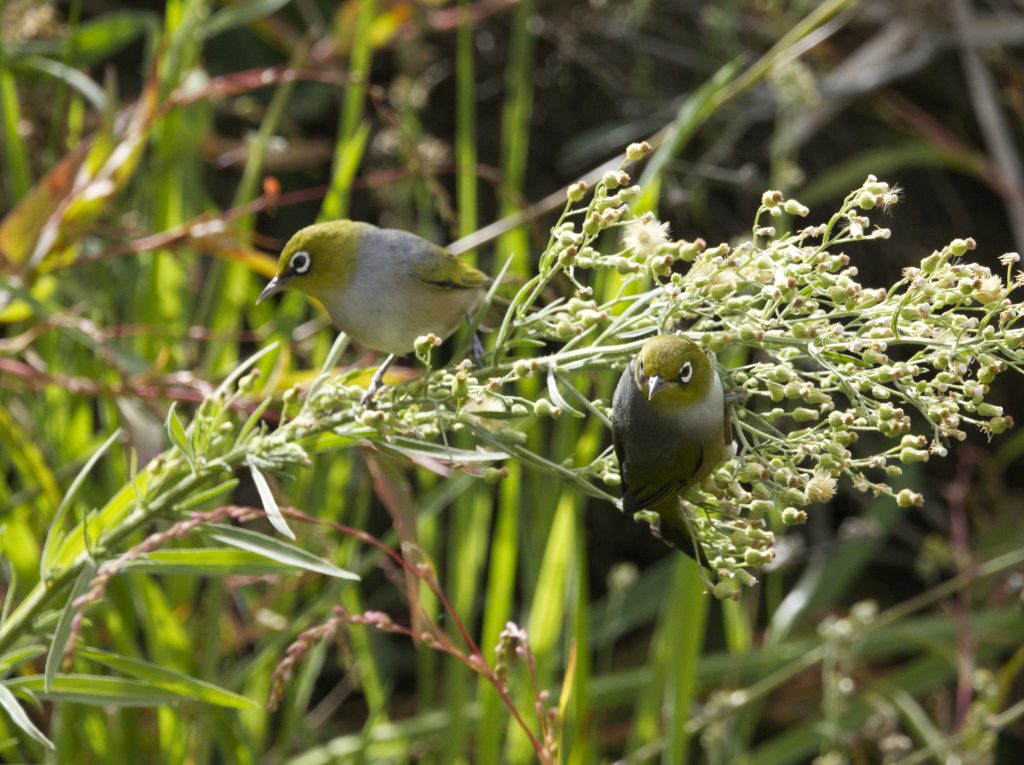
I finally managed to get my first shots of Silvereyes at Guyver Bridge, where you can pause for a while and see them fluttering around in the nearby bushes. It’s also where I’ve seen Striated Thornbills. Keep watch for Superb Fairy-wrens around here also, and plenty of Red-browed Finches around the roadside stream.
Want to find out more? Check out my favourite tips for photographing wildlife and all the details on my photography equipment!
What are your favourite Blue Mountains bushwalks for spotting our amazing birdlife? Let me know in the comments below!